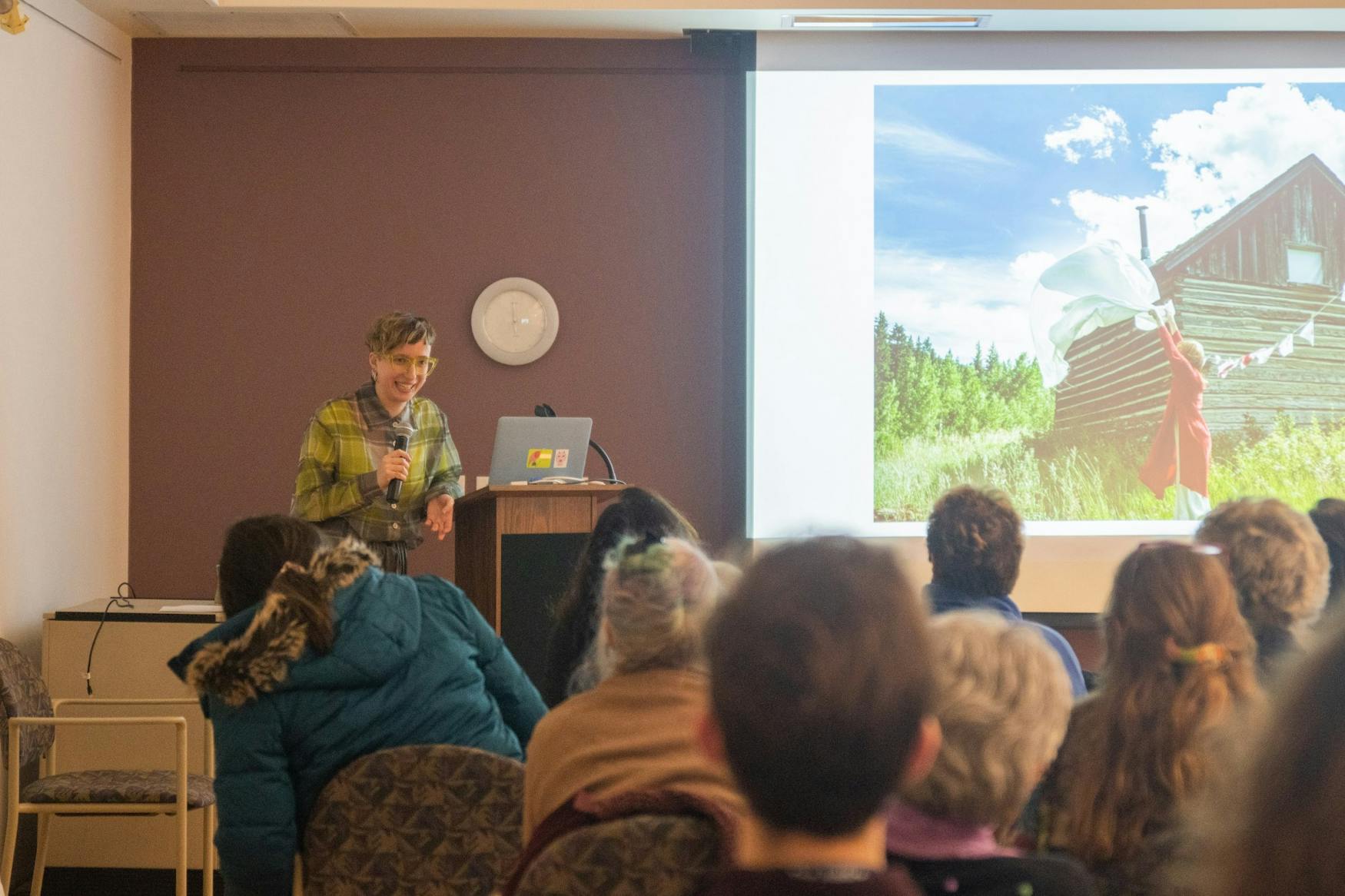Artist’s work explores relationship between queer and Jewish identities
Goldbloom presented her photographs that deal with queer identities in Hasidic communities.
Artist Shterna Goldbloom presented her photography, which was inspired by her experiences reconciling with her queer identity and Hasidic upbringing, as part of an exhibit of her work at the Hadassah-Brandeis Institute on Wednesday. Goldbloom was selected from among 70 applicants, and her exhibit, entitled “Ich Bin Di Sitra Achra” — Yiddish for “I Am The Other” — is part of an HBI sponsored series of exhibits by Jewish artists.
Goldbloom grew up in a Hasidic community in Chicago, Illinois, a place which she described as “very gendered.” She only had female friends, she said, and certain tasks, such as making challah, were assigned to only girls. When she went to college (something that was discouraged by her community), she began to make art that dealt with the experiences and traditions of her upbringing, as well as notions of gender and queerness.
Some of Goldbloom’s early projects question gender norms, particularly composite photographs she created by taking photographs of herself and her twin brother wearing the same clothes and participating in gendered tasks such as baking or taking out the garbage. These works drew inspiration from the work of photographer Kelli Connell, whose work involvedscomposite photographs (pieces made from multiple separate photographs combined) of the same model wearing different clothes in order to explore notions of gender and expression, Goldbloom said.
Another composite photograph portrayed Goldbloom as two figures sitting next to each other, one wearing traditional clothing from her youth and the other wearing the style of clothes she wears currently. The piece was inspired by the work of artist Frida Kahlo, Goldbloom said, and bears a striking resemblance to Kahlo’s “The Two Fridas.” Goldbloom wanted to explore both sides of herself in the painting –—past and present, religious and secular. “I was strong in both of those people,” she said.
Many of Goldbloom’s photographs address Jewish traditions. One photograph showed Goldbloom holding a chicken to represent the Hasidic practice of kapparot, or the ritual transfer of sins to a chicken before Yom Kippur, the Jewish day of atonement.
Another showed Goldbloom leaning backward as someone out of the frame cut her hair with shears. This piece was meant to address both shechita, or the practice of slaughtering animals according to kosher guidelines, as well as the tradition that Hasidic women cut their hair when they get married. For Goldbloom, these photographs were part of her process of analyzing her values of what was good or bad, and why.
Goldbloom also created a series portraying queer individuals who had grown up in Hasidic communities, inspired by the Yiddish word “feygele,” which means both “small bird” and “homosexual.” These works included portraits, as well as three Torah scrolls.
The first scroll was encased in an embroidered cloth covering, symbolizing queer individuals who were not publically out. The second scroll was partially unrolled and showed a portrait of someone who had been through gender and social transitions. The final scroll was fully unrolled and showed a photo of a queer family, to represent those who had established a space for themselves.
Goldbloom was inspired by the idea that the Torah is a living document that is constantly reinterpreted, she said, as well as the fact that queer narratives have been historically excluded from those interpretations. The pieces in the “feygele” collection were meant in part as a testament to queer Hasidic people’s existence, Goldbloom said. “Some of this body of work is just to simply say, ‘Here. This is proof,’” she said.
Following Goldbloom’s presentation was an opportunity for the audience members to ask questions. One person asked about the significance of the color red, which is prevalent in her work. The color red is linked both to Jewish history and queer history, Goldbloom said. Goldbloom pointed to the “blood libel” accusation that Jews use non-Jewish children’s blood for ritual purposes and the fear surrounding blood during the AIDS crisis as specific examples.
Another audience member asked whether Goldbloom felt that there was a space for queer people within the Hasidic community. Goldbloom said that she understood that many queer people were estranged from their communities for valid reasons, often the result of a “mutual pushing away,” as she put it, yet she wished there was more connection between queer communities and Hasidic communities.
She cited her mother as an example of someone who is both “queer and frum” — frum meaning religious — and has stayed in her community and been accepted.
Goldbloom received her MFA in Photography from Rhode Island School of Design in 2019, and her art has been displayed at the Museum of Fine Arts in Boston, the Rhode Island School of Design Museum and the Fotovakschool in Amsterdam and Rotterdam, according to her introduction by curator Susan Metrican at the event. The exhibit “Ich Bin Di Sitra Achra” is on display through July 3 in the Epstein Building.
The event was co-sponsored by the Department of Fine Arts, the Division of Creative Arts and the Jewish Feminist Association of Brandeis.



Please note All comments are eligible for publication in The Justice.